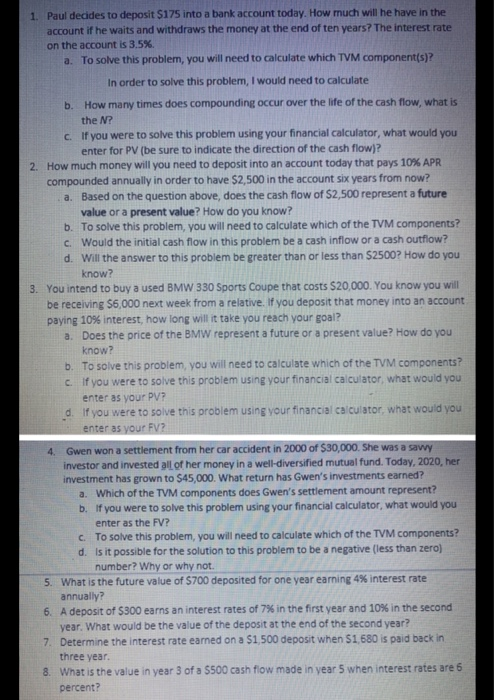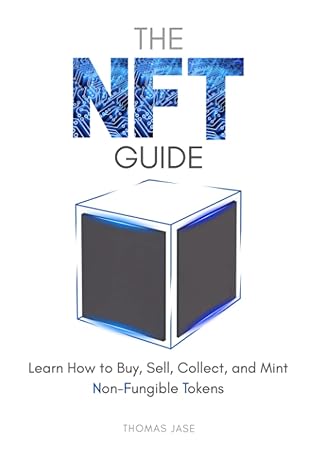Answer all of the questions: #1 - #8

1. Paul decides to deposit $175 into a bank account today. How much will he have in the account if he waits and withdraws the money at the end of ten years? The interest rate on the account is 3.5%. a. To solve this problem, you will need to calculate which TVM component(s)? In order to solve this problem, I would need to calculate b. How many times does compounding occur over the life of the cash flow, what is the N? c. If you were to solve this problem using your financial calculator, what would you enter for PV (be sure to indicate the direction of the cash flow)? 2. How much money will you need to deposit into an account today that pays 10% APR compounded annually in order to have $2,500 in the account six years from now? a. Based on the question above, does the cash flow of $2,500 represent a future value or a present value? How do you know? b. To solve this problem, you will need to calculate which of the TVM components? c. Would the initial cash flow in this problem be a cash inflow or a cash outflow? d. Will the answer to this problem be greater than or less than $2500? How do you know? 3. You intend to buy a used BMW 330 Sports Coupe that costs $20,000. You know you will be receiving $6,000 next week from a relative. If you deposit that money into an account paying 10% interest, how long will it take you reach your goal? a. Does the price of the BMW represent a future or a present value? How do you know? b. To solve this problem, you will need to calculate which of the TVM components? C. If you were to solve this problem using your financial calculator, what would you enter as your PV? d. If you were to solve this problem using your financial calculator, what would you enter as your FV? Gwen won a settlement from her car accident in 2000 of $30,000. She was a sawy investor and invested all of her money in a well-diversified mutual fund. Today, 2020, her investment has grown to $45,000. What return has Gwen's investments earned? a. Which of the TVM components does Gwen's settlement amount represent? b. If you were to solve this problem using your financial calculator, what would you enter as the FV? c. To solve this problem, you will need to calculate which of the TVM components? d. Is it possible for the solution to this problem to be a negative (less than zero) number? Why or why not. 5. What is the future value of $700 deposited for one year earning 4% interest rate annually? 6. A deposit of $300 earns an interest rates of 7% in the first year and 10% in the second year. What would be the value of the deposit at the end of the second year? 7. Determine the interest rate earned on a $1.500 deposit when 51,580 is paid back in three year. 8. What is the value in year 3 of a $500 cash flow made in year 5 when interest rates are 6 percent? 4








